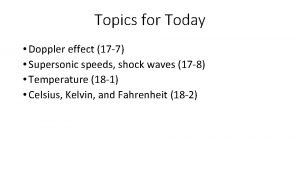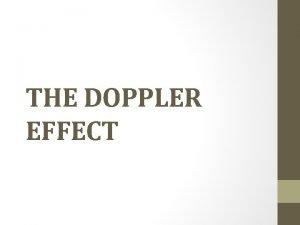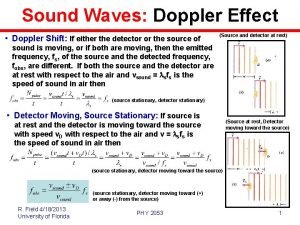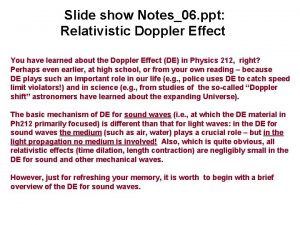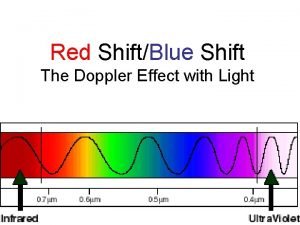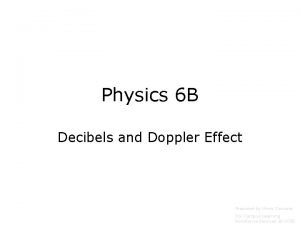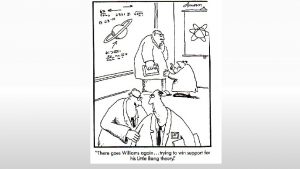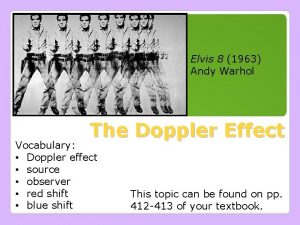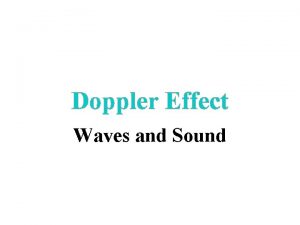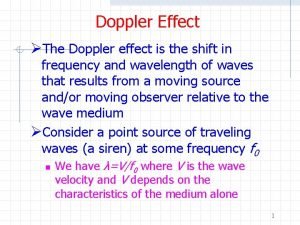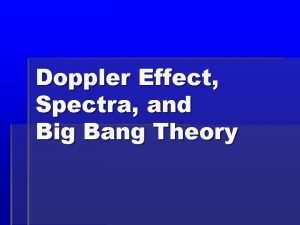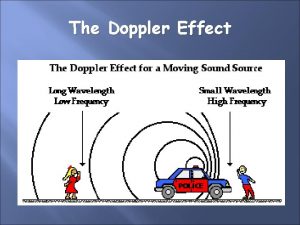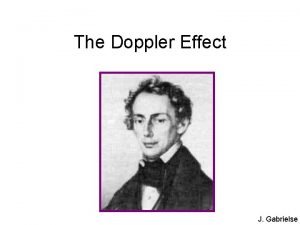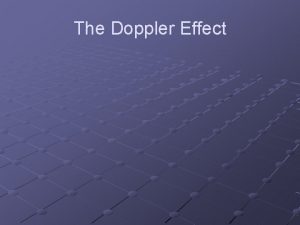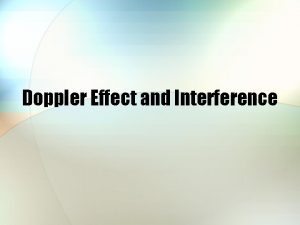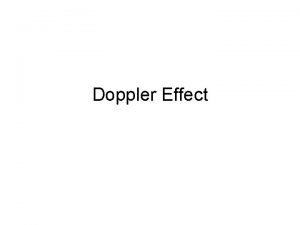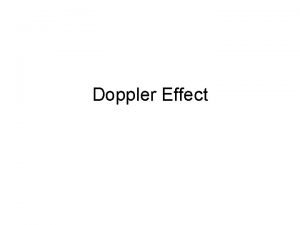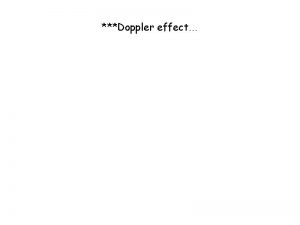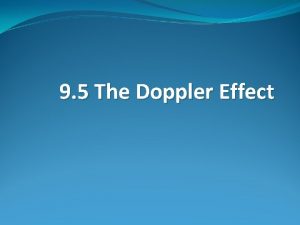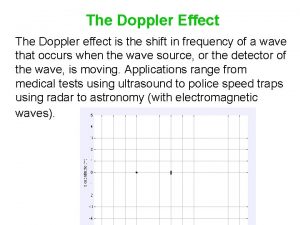THE DOPPLER EFFECT Doppler effect is the change













- Slides: 13

THE DOPPLER EFFECT

• Doppler effect is the change in frequency (or pitch) of the sound detected by a listener, because the sound source and the listener have different velocities relative to the medium of sound propagation.

• The movement/position of the listener towards the source or by the source towards the listener affects the sound heard by the listener. • Two properties of sound that determines the sound heard but the listener are frequency and wavelength • The frequency of a sound determines the pitch

Stationary source and listener • When the source and the listener are both stationary the frequency emitted by the source equal to the frequency observed by the listener. From v=fλ ; frequency and wavelength do not change at a constant speed if both the observer and the listener are stationary.

• When the frequency of a wave changes, there is an associated change in wavelength. • This can be determined from the wave equation: v = f. λ

Source moving towards a stationary listener • When the source moves towards the listener the wavelength in front of the source decreases and the wavelength behind the source increases. From v=fλ ; the frequency in front of the source increases (wavelength decreases) and the frequency behind the source decreases (wavelength increases).

• When the object approaches the listener the sound waves emitted by the object are compressed in front of the object; more sound waves reach the listener per second and the pitch (frequency) appears to be higher than the sound emitted by the source (bird). • The wave fronts ahead of a moving source are compressed and more crests reach the observer per second, meaning a higher frequency.

Source moving away from the listener • When the source moves away from the listener, the frequency decreases. • When the source moves away from s the listener; the wave fronts behind a moving source are further apart and fewer crests reach the observer per second, meaning a lower frequency.

Listener moving towards/away from the source • When the listener moves towards the source, the frequency observed increases. • When the listener moves away from the source, the frequency observed decreases. • When the observer moves then the effective speed of sound changes. The wavelength remains fixed, but as the observer approaches the source, the higher effective speed of sound produces a higher frequency. When moving away, the lower speed of sound produces a lower perceived frequency.

The Doppler equation •

Using the Doppler equation Be careful to either add or subtract the velocity of the listener and/or source from the velocity of the sound in air – depending upon whether the source is moving towards or away from the listener and whether the listener is moving towards or away from the source. • f the source is moving away from the observer the speed of the waves relative to the listener is Vsound+ Vsource. • If the source is moving towards the observer the speed of the waves relative to the listener is Vsound- Vsource. • If the listener is moving towards the source, then speed of the waves relative to the listener is Vsound + Vlistener. • If the listener is moving away from the source, then the speed of the waves relative to the listener is Vsound - Vlistener.

Uses of the Doppler effect • The blood flow in the heart can be measured by making use of the Doppler effect. • An ultrasound probe is used and the direction of flow and relative velocity of the blood flow can be determined by calculating the frequency shift caused by the flow of a sample of blood. • The heartbeat of a foetus in the womb can also be monitored using the Doppler Effect

RED SHIFT • The Doppler Effect is characteristic of all waves – including light. • All stars emit white light and stars moving away from the earth will display light with longer wavelengths – the red colours of the spectrum, due to the Doppler Effect. • Astronomers have found that all stars exhibit a red shift – meaning that they are moving away from the earth and from each other.
